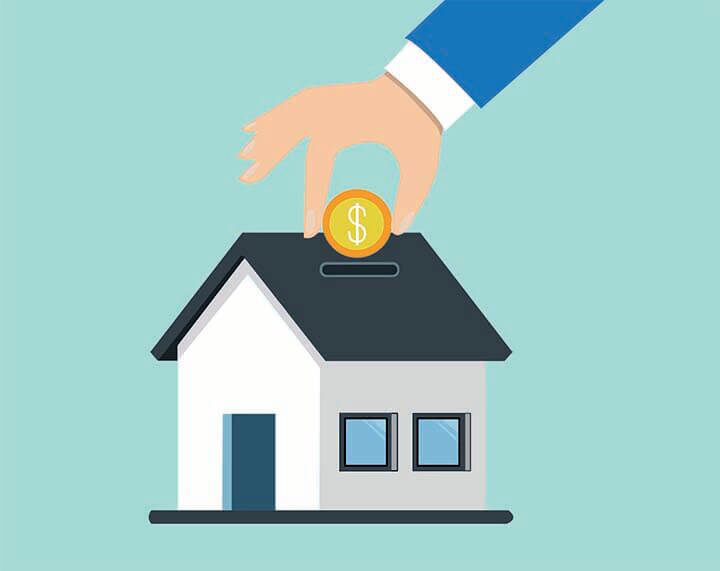15-Year vs. 30-Year Mortgage
Nov 23, 2023 By Susan Kelly
Standard lending practices recommend that borrowers purchasing a home use a 30-year fixed-rate mortgage. This allows them to spread their loan payments over 30 years and keeps their monthly payments lower while paying more interest. A 15-year mortgage can be paid off in half the time if the borrower can pay more monthly. A 30-year mortgage will require a lower income and a lower debt-to-income ratio. The monthly payments for the 15-year mortgage are more expensive.
A $250,000 mortgage at a 4.5-percent interest rate would result in a monthly payment of $1,276 for the 30-year mortgage and $1.912 for the 15-year mortgage. This is a $636 difference. Over the term of the 30-year loan, you would pay $206,018 and $94,247, respectively.
What Mortgage Terms Have an Impact on Cost
A mortgage is a specific type of term loan, one that is secured by real estate. A term loan is a loan where the interest rate and monthly payment are calculated annually. This interest is applied to the outstanding loan balance. Both the monthly payment and interest rate are fixed.
The monthly payment is fixed so that the principal and interest portion of the monthly payment does not change. The principal and interest are the largest portions of the monthly payment at first, as the loan balance is high. As the loan balance decreases, the payment's interest portion falls, and principal shares increase.
The 15-year mortgage is more affordable because the loan term is shorter. This means that you will have to pay more monthly. The loan is cheaper because it has a shorter term. A 30-year mortgage can cost twice as much over the life of the loan than a 15-year one.
30-Year mortgage
The principal balance on a 30-year mortgage shrinks more slowly. In other words, the homebuyer borrows twice as much for the same period. It takes twice as long to get a 30-year mortgage than a 15-year loan. The principal balance on a 30-year mortgage does not decrease as quickly as it does with a 15-year loan.
The gap between mortgages will be greater if the interest rate is higher. For example, a 4% interest rate means the borrower pays almost 2.2x more interest to borrow the same amount over 30 years than a 15-year loan. A 30-year mortgage has a low monthly payment, which is its main advantage. Even if affordability is not an issue, there are still other benefits.
A borrower may be able to purchase more houses with a lower monthly payment than they could afford with a 15-year loan. However, the same monthly payment would enable the borrower to take out a longer loan over 30 years. A borrower can save money with a lower monthly payment. A lower payment allows you to save money for other purposes.

Mortgage for 15 Years
A 15-year mortgage costs consumers less. This can range from 25% to one-quarter of a percentage (or point) and can add up over time. Additional fees are charged by government-supported agencies like Fannie Mae or Freddie Mac to make 30-year mortgages more costly.
These fees are usually applicable to borrowers who have lower credit scores or smaller down payments and those with higher credit scores. The Federal Housing Administration also charges higher mortgage insurance premiums to 30-year borrowers. Some loan price adjustments available during a 30-year don't apply to borrowers who have a 15-year. Morin says that most people roll these costs into their mortgage to get a lower rate rather than pay them outright.
A $300,000 loan is available at 4% for 30 year or 3.25% for 15, respectively. Combining the faster amortization with the lower interest rate, borrowing money for only 15 years would be $79,441, or almost two-thirds of what it would cost to borrow over 30 years. Saving so much money in the long term is worth paying a higher monthly cost. The monthly payment on the hypothetical 15-year loan would be $2,108, $676, or about 38 percent more than the $1,432 monthly payment for the 30-year loan.
The Best-of-Both Worlds Option
Most borrowers don't have the financial resources to pay the 15-year mortgage's higher monthly payments. There is an easy way to save money with a shorter mortgage. Make the higher monthly payments on your 30-year mortgage. The borrower has the right to make extra payments to the principal. The mortgage will be paid in 15 years if the payments are regular. The borrower can return to the regular, lower 30-year payments if times are difficult. A borrower who accelerates payments will have their interest subjected to the 30-year rate, which is higher than what they would have paid if they had paid the mortgage off in 15 years. However, the rate on the shorter loan was lower.








